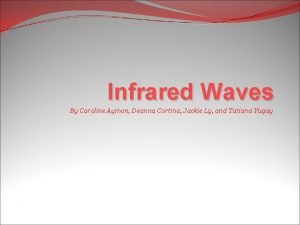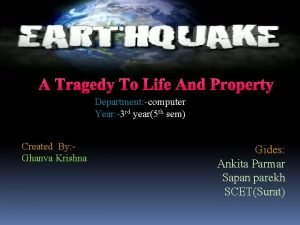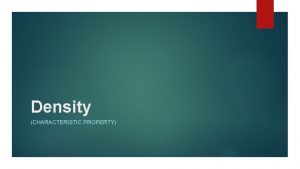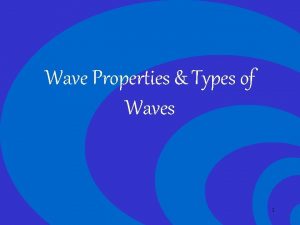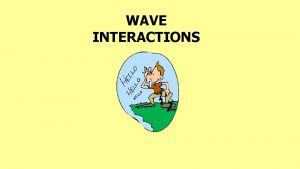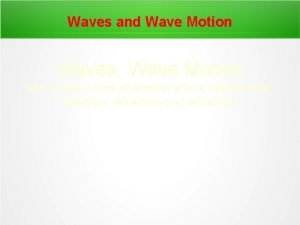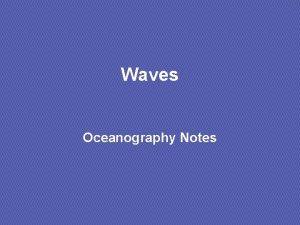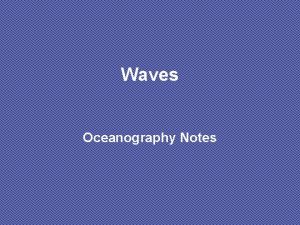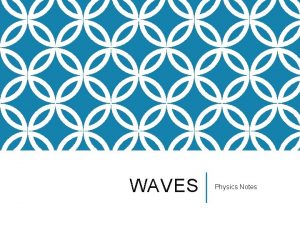Wave Characteristic Notes 10 16 18 Waves Waves













- Slides: 13

Wave Characteristic Notes 10 -16 -18

Waves �Waves are created when a source of energy (force) causes a vibration. �Vibration: a repeated back and forth or up and down motion.

How Waves Travel �There are two ways a wave can travel: �Through a medium. � Medium: material through which waves can travel; a solid, liquid, or gas � The particles of the medium do not move along with the wave they vibrate. � ALL waves can travel through a medium. �Through empty space. � ONLY electromagnetic waves.

Types of Waves �There are TWO types of waves �Electormagnetic � Waves that can travel through matter or empty space where matter is not present. � They make up the Electromagnetic Spectrum �Mechanical � Require particles of the medium to vibrate in order for energy to be transferred � There are 2 types: Compressional and Transverse

How Mechanical Waves Move �Compressional Waves: �The particles in the medium vibrate by pushing together and moving apart parallel to the direction in which the wave travels. �The place where it is pushed together is a COMPRESSION. �The place it is spread apart is a RAREFACTION.

How Mechanical Waves Move �Transverse Waves: �The particles in the medium vibrate by moving back and forth and perpendicular to the direction the wave travels. �The highest point of the wave is called a CREST. �The lowest point of the wave is called a TROUGH.

Frequency �A measure of how many waves pass a point in a certain amount of time

Amplitude �A measure of the distance between a line through the middle of a wave

Amplitude �The greater the forces that produces a wave, the greater the amplitude of the wave and the greater the energy the wave has. �Sounds with greater amplitude will be louder. �Light with greater amplitude will be brighter.

Wavelength �A measure of the distance from the crest on one wave to the crest on the very next wave.

Wavelength �Wavelength is influenced by frequency. �Higher frequency causes shorter wavelengths �Less frequency causes longer wavelengths

Wave Speed = Distance / Time Wave Speed = Wavelength * Frequency V=λ*f

Wave Speed �A measure of the distance a wave travels in an amount of time �Determined by the type of wave and the nature of the medium. �Waves change speed when they change mediums.
 Characteristics of infrared
Characteristics of infrared Characteristic of love waves
Characteristic of love waves Sound waves are longitudinal waves true or false
Sound waves are longitudinal waves true or false Carbon dioxide temperature
Carbon dioxide temperature Difference between full wave and half wave rectifier
Difference between full wave and half wave rectifier Example of longitudinal wave
Example of longitudinal wave Examples of half wave rectifier
Examples of half wave rectifier Full wave rectifier vs bridge rectifier
Full wave rectifier vs bridge rectifier P and s wave chart
P and s wave chart Full wave rectified sine wave fourier series
Full wave rectified sine wave fourier series What is a wave
What is a wave Wave wave repeating
Wave wave repeating Fourier series of non periodic function
Fourier series of non periodic function Mechanical and electromagnetic waves venn diagram
Mechanical and electromagnetic waves venn diagram
